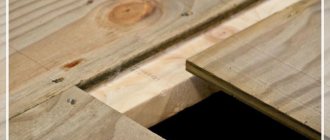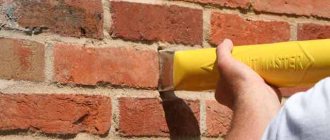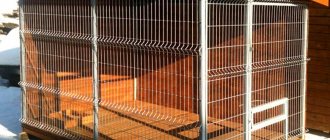Projects of old and modern multi-storey buildings do not always suit individual apartment residents. Narrow doors create discomfort and prevent the passage of large furniture. To solve the problem, widen the openings by demolishing part of the partition. There are projects with the downside of the issue - the doors are too wide. The overall sash sags on its hinges under the weight and looks ugly. To solve this problem, apartment residents begin to narrow the doorway during a major renovation.
What are the risks? Documentation
Not all factory doors are suitable for installation in an interior opening, which is especially true for those apartments that were built in Soviet times. Only widening the existing opening will save the situation. New door units have standard dimensions, which makes them very different from older products that have been in place for several decades.
Great options could be height or width. The problem can be solved through the functional and decorative arrangement of the interior passage. The hole in the wall can be made larger or smaller. Expanding an opening in a load-bearing wall is not always safe. If you plan to restore a partition that is not the functional basis of the building, nothing bad will happen. In this case we are talking about walls made of cellular concrete, plasterboard or any other building material. But the work can be troublesome when it comes to the need to transfer a metal profile.
If you want to increase the passage in a load-bearing wall, then such a reconstruction will be a redevelopment. Work in this case must be carried out in accordance with a separate project, which contains an engineering calculation of the redistribution of loads on the floor after the amount of changes made. When expanding an opening in a load-bearing wall, you should collect some documents that are prescribed by regional requirements. This should include:
- documentation for housing ownership;
- certificate from the local BTI;
- an extract from the house register;
- reconstruction plan from an architectural organization;
- floor plan of the building;
- plan of all stages of work.
In the end, the decision to increase the passage can be a real red tape. This list of documents is not necessary for show, but for the safety of people who live in and around the apartment. If the load-bearing partition is damaged without permission, this can lead to the collapse of the wall and the collapse of part of the house. It is worth avoiding irreparable consequences by strengthening the opening.
Interior door extension
Hello to all readers of the site “Secrets of the Master”! It's been a while since I remodeled interior doors. I devoted several articles to this topic. But they were all about reducing the door leaves to fit non-standard opening sizes. This time we will talk about increasing the length of the door leaf. Those who know me better know that in the recent past I have been manufacturing laminated interior doors. So, from those times, there was only one door left with dimensions of 1940x680 mm, from which we will make a standard height of 2000 mm. For work we will need:
- Drill with a set of drills.
- Jigsaw with nail file.
- Milling cutter with rolling cutter.
- Clamps - 4 pcs.
Also some material:
Procedure for extending doors
✔First of all, we need to prepare an additive from a bar and overlays from fiberboard or an additional strip. To do this, cut off the bar. Its length must correspond to the width of the door leaf 680 mm. ✔We glue laminated fiberboard onto this block on both sides.
Please note that the fiberboard must be at least 5 mm larger than the block.
✔ We tighten everything with clamps for reliable gluing.
✔ Leave to dry. Preferably for at least a day.
✔ After complete drying, we roll the workpiece with a router, but only the long sides.
Now we need to prepare the canvas itself.
✔ We make markings for the ventilation grill so that it fits freely, and this is 5 mm larger than the internal size of the ventilation itself.
✔ Cut out using a jigsaw.
✔ We fasten the ready-made additive to the door with self-tapping screws (100×4.5 mm). ✔ For reliability, coat with PVA glue.
Advice. In order for the additive to be flush with the canvas, it is necessary to use so-called guides in the form of wooden blocks.
You can use something second-hand.
✔ We compress the entire structure with clamps. ✔ Let it dry. ✔ We finally roll it in with a router. ✔ Where there is any inaccuracy at the ends, we adjust it using a sanding machine, after first removing the paper edge from the sides.
The door leaf is almost ready.
✔ Now all that remains is to glue the new edge using an iron or a hair dryer.
Read how to do this in the article “Doors Won't Close? There's an answer." ✔ After this, insert the halves of the ventilation grille and tighten them with the self-tapping screws that come with the kit.
The door has been extended.
The next article will be about the restoration of the external walls of the house. Best regards, Yuri Filippov.
Expansion parameter calculations
If you have a door structure that can fit a hole in the wall, you can calculate the exact parameters. You should not cut the opening by eye; it is necessary to make precise markings. You must measure the width and height of the existing door, the width and thickness of the door frame that comes with the kit.
At the next stage, you will need to find out what is the width of the platbands that you plan to install. It is important to choose the right threshold and measure its height. It may not exist. Before you begin to expand the opening in the load-bearing wall, you need to determine the width of the passage, which will be the sum of the thickness of the frame post, the width of the door leaf and 2 cm technological gaps on each side. You can determine the height of the doorway by adding the height of the threshold to the thickness of the frame . The technological gap should be added to the obtained value.
Typically the wall thickness is 75 mm. If other indicators are available, extensions should be added when the walls are wider. An alternative solution would be to purchase a box with a narrow beam. Before you begin to expand the opening in the load-bearing wall, you should take measurements and markings, carrying out the work with high accuracy. If the gaps are taken with a margin, they may not cover the wide platbands during decorative finishing.
Remaking interior doors
Let's start with the fact that any door block consists of two parts - the so-called “frame” (lutki) and the door leaf. The box is placed “tightly” in the opening. A canvas opens from inside the box, which can be glazed or solid (solid). Boxes come with a threshold and without a threshold. This affects the overall dimensions of the block. Doors differ in their action (opening and closing) on the “right” and “left”. Standard dimensions of door blocks assembled with a threshold depending on the thickness of the racks: 650 × 2050 mm (660 × 2060) for bathroom units: 750 × 2050 mm (760×2060) for kitchen: 850×2050 mm (860×2050) for living quarters, etc. There are many types of doors. Among wooden doors, the most common type is a frame structure, and boards, plywood, fiberboard, and glass are used as the internal material. Recently, doors with laminated coatings, including those imitating the texture of natural wood, have become increasingly used, so to save money, I would advise buying just such doors. These doors can be converted to almost any size.
You need to start by measuring the opening where the block will be installed. If the opening is currently occupied by an old door block, then in order to take the exact dimensions, it is necessary to remove the platband, which is nailed along the edge. Then we measure the width from brick to brick (the outer size of the box should be 2-5 cm smaller than the size of the opening), measure the height from the finished floor to the lintel-beam (the outer height of the box should be at least 1 cm less than the opening). But it happens, and in private houses it is often and densely, that the finished opening does not fit in size and it is simply impossible to expand it. In this case, it is necessary to adjust the door leaf by reducing the size.
This is not as difficult to do as it might seem at first glance. To do this, you need to have a small arsenal of power tools:
- Manual frezer .
- Cylindrical cutter.
- Carpentry clamps.
- Hand grinder.
- Screwdriver.
Now everything is in order.
- 1. Place the unpacked door on two previously prepared bars (100 × 100 × 1000 mm). Place small pieces of polystyrene or foam rubber between the bars and the door.
- 2. Set the dimensions. How much should I reduce it? In our case - by 15 mm + the size from the edge of the cutter blade to the edge of the router table (support). On my Fiolent it’s 57 mm. The total is 72 mm. For example, if we need to reduce the door from 800 mm to 785 mm, then the stop (for me it is a fragment of chipboard measuring 2500 × 400 mm) must be placed (800-82 = 718 mm) 718 mm from the edge. One more thing - it is necessary to lay tape (preferably masking) along the place where the router will move. This will protect the door leaf from possible scratches.
- 3. Take a hand router with a cylindrical cutter installed (blade length is at least 40 mm), turn it on and gradually process the end of the door to the specified size.
- 5. Then you can sand the end of the door a little with a grinding machine - it won’t make it any worse.
- 6. Since the end after our processing was left without decoration, it is necessary to glue it with an iron.
- Decor - a regular paper edge (38 mm wide) with an adhesive backing used in furniture production, which can be purchased at a furniture fittings store
- 7. After gluing the edges, the excess is cut off with a wallpaper knife and the edges are cleaned with sandpaper.
- In this way, you can reduce the size (in height and width) of almost any door leaf, I mean laminated or MDF doors.
Thanks to this, it is possible to adjust standard size canvases to smaller, non-standard ones. This makes it possible to fill any openings. I think that solid wood doors (entirely wooden) can also be remodeled within reason.
Next, I will tell you how you can change the door block without removing the old frame (loot) because... There are times when it is simply impossible to dismantle, because the whole opening may collapse due to the specifics of the construction, mainly - this applies to old private houses, less often to old apartments. You can, of course, strengthen the above-door part of the opening with a profile before dismantling, but this will require additional labor, costs and, of course, unsafe.
We start with measurements. We measure the internal size of the old box in width: let's say 1070 mm minus 30-40 mm for accurate installation of the new box, if the old one is not level. In height, the internal size of the box from top to floor: let’s say 2000 mm minus 20 mm. If there is a threshold, then we cut it out and remove it because We don't need him. We get the outer size of the new one - 1980x1030 mm, which we will install.
The door block for this size of the opening (1980×1030 mm) should be one and a half, i.e. one door is wider and the other is smaller. For example, 600 mm and 380 mm are the width of the canvases, taking into account the thickness of the two frame posts and the gap between the doors - this is 4-6 mm, as well as a 30-50 mm gap for the polyurethane foam. This size may vary depending on the thickness of the box being inserted. And the door height is 1930 mm.
I have already written above how to reduce door panels.
As you can see, the old box (loot) is not visible. On the inside, the new standard (100 mm) box, as a rule, does not overlap the old one in width. Therefore, it is necessary to increase the width of the new frame around the perimeter using an additional expansion strip, which is sold in any door showroom. I usually use this one. Universal additional panel (MDF). Dimensions: Length: 2070 mm. Width: 120 mm. Thickness: 10 mm.
When the mounting foam has dried after installation (preferably the next day) and the painting work has been completed, cash is filled on both sides of the block. After which, based on their appearance, no one is guaranteed to think that there were once old doors.
There are also openings of non-standard sizes, for example, the width is too small for a double-hollow or one-and-a-half door, but too large for a single-sex door. In such cases, you can make a door like a book, i.e. folding door.
And yet, it happens that a standard 900 mm door does not open conveniently in a narrow corridor. This is not difficult to do. ✓ Take a door 900 mm wide, measure 600 mm (if less, it will not be convenient to pass through). ✓ Mode with a hacksaw for wood, but in such a way that the blade does not fly out, those. We cut through one side of the door, turn it over - the other is in flight mode. In general, we do one door, two doors. Since the doors are hollow inside, it is necessary to insert lengthwise bars with PVA glue measuring 27x27 mm (27x40 mm, 27x45 mm are possible).
But 27 mm for doors with a thickness of 35 mm the size remains unchanged. Otherwise, you will not insert the block if it measures 30x40 mm. Then, when the glue dries after about 12 hours at an air temperature of +20 ° C, you need to sand the end a little and stick on the decor (edge) to match the color of the door. Using a hot iron, press the edge to the end of the door, cut it off and clean it. When the canvases are ready, we connect them together using canopies. We simply divided one door by width - 900 mm by 600 mm and 297 mm.
What to do if a door block with a redesigned door of 600 mm and 297 mm is not enough to fill the opening. Then you just need to select a standard door size and a self-made half from an additionally purchased blank or glazed panel. The latter will be a little more difficult because... You will have to make two cuts because of the glass. Deaf is easier.
Arch calculation according to state standards
If you want to remove the arched vault when transitioning to an adjacent room, there is no way to avoid widening the transition. Before making an arched opening, you should calculate it. The opening can have any type of configuration. The shape of an arched vault can be any, while a curved bend can be attributed to a creative eye.
When constructing an opening in a load-bearing wall, it will be more difficult to make a classically shaped arch with the correct bend of 45 cm, so you need to stock up on certain equipment to carry out calculations on a scale of 1 to 50. Among the available tools and materials, you should highlight paper and a compass.
When calculating, you will need to use the Pythagorean theorem from the school curriculum: R² = L² + (R²-H²). The well-known Pythagorean formula made it possible to derive, and for masters of the construction field to use, a formula for calculating the radius of the circle of an arch in an opening. You will need to use a calculation based on the following formula: R = L² + H²/2H.
To determine the radius of the arch, you can use simpler, but not entirely accurate, calculations. To do this, a doorway of expanded dimensions is depicted on paper. Previously, a piece of wallpaper was used for this. After this, you should install a compass on the axis of symmetry and, changing the radius, draw several arcs. This way you can choose the best option; the remaining radii are then erased.
It turns out that a standard door leaf can be trimmed. Advice from the manufacturer
Let's understand the design of interior doors using the example of ALBERO doors.
The door consists of:
- frame,
- Filler,
- Glass (or other material) inserts.
Frames
- panel sheets,
- tsar canvases.
Panel sheets are a structure consisting of a frame, internal mortgages, glazing elements and honeycomb core.
Aggregate
Used for panel doors. It is impossible to trim such a door without compromising its strength and aesthetics.
We are sucking on other tsar fabrics.
Drawstring panels are a constructor: a prefabricated frame made of drawstring parts (side posts and crossbars), into which various panels, panels and glass are inserted.
Drawstring fabrics are repairable. You can replace their inner part or trim them.
The beams are located inside. The tsar door consists of beams and MDF. The beams are located inside
. For example, you need a canvas with a width of 570 mm, you need to buy one with a width of 600 mm, and the master will disassemble the canvas and cut it to the required size.
You can go through the door in this way no more than once; repeated assembly and disassembly weakens the screw attachment points.
Drawer door - drawer connection: each part is wrapped separately in polymer film.
The drawer consists of pine timber and MDF. The polymer film peels off from the timber, so the pine parts are placed in MDF. Which also makes it resistant to water.
Where to begin
Before constructing an opening in a load-bearing wall, the old door structure must be dismantled and the opening strengthened. If the work is carried out in an old panel house, then reinforcement can be done after the concrete cutting is completed. As for brick openings, they require special attention. When manipulating a brick wall, you should prepare certain tools and materials, such as:
- coupling bolts;
- tie channel;
- hairpins;
- metal corners;
- steel plates;
- cement mortar;
- petrol cutter;
- electric drill;
- Bulgarian
The coupling bolts must have a diameter of 20 mm. The diameter of the pins is 16 mm. Steel plates should be made from sheet steel. Instead of a grinder, you can use an electric cutter or a gas cutter. Diamond wheels should be prepared for the angle grinder. You can cut concrete using a variety of tools, but diamond cutting is the most suitable option.
You will need jacks or supports for the duration of the work. When you need to cut a brick wall, you should also prepare a hammer drill. The class of material used for reinforcement and the cross-section of the beam should be determined during preliminary load calculations.
The obtained figures should be included in the design documentation for the redevelopment of the premises. The steel channel profile should fit into the thickness of the brick wall by approximately 25 cm. Its length is selected taking this into account. To install the tightening bolts, holes are made in the channel; there must be at least 3 of them. This will be enough for an opening of medium length. The channel ties are located at a distance of 50 cm.
How can I reduce it?
The opening in the wall does not always need to be enlarged; sometimes, on the contrary, it is increased. This is done to install a door or window of a smaller size, or if an excess section has been cut off.
The easiest option is to use a beam.
Sequencing:
Using a plane, the timber is adjusted to the desired size. The final workpiece should not protrude beyond the edge of the wall. The surface is sanded so that the putty fits better on it.- To attach the blanks to the wall, holes are drilled in them. Anchors and bolts are used to secure the posts and lintels.
- The gaps are filled with construction foam. Small cracks are filled with putty.
- When the structure is installed, it is impregnated with a primer and lined with a suitable material.
It must be taken into account that the sash will be regularly subjected to dynamic loads. Therefore, there should not be a large distance between the fastening steps.
In addition to timber, the opening can be reduced using materials such as:
- Drywall. To install it, you will need to assemble a frame based on an aluminum profile. Drywall sheets are fixed with self-tapping screws.
- Foam blocks. They are easy to work with; they are used mainly in houses with thick walls. The blocks on the sides of the opening are placed in columns on top of each other, and the lintel is made of timber.
- Bricks. For this type of masonry, it is recommended to make the lintel from metal corners.
Any of the listed materials can be used to narrow the opening in a concrete wall.
Carrying out dismantling work
Before constructing a doorway in a load-bearing wall, you first need to create markings on the plane. The process will be somewhat easier if you use diamond cutting. An excellent option would be circles that reach a cut depth of up to 10 cm. During operation, the walls are wetted with water, which will reduce dust formation. It is important to remember about safety measures, namely:
- protective suit;
- respirator;
- gloves;
- special glasses.
The construction of a doorway in a load-bearing wall provides for double-sided operation. It will be necessary to cut out from different sides due to the massiveness of the partition. Before dismantling work, the opening is strengthened. The best option for increasing the reliability of a load-bearing partition would be to use welded frames that are pulled together with studs through the walls.
When expanding a doorway in a load-bearing concrete wall, you should work in small areas in the form of squares or rectangles. In brick partitions, a through cut is usually made, while the blocks themselves must be knocked down with a hammer drill, after which you can use a sledgehammer if necessary. If we are talking about concrete, you should not use a hammer drill for it. Vibration effects can be destructive to the panel, which will lead to the formation of microcracks and weaken the entire structure. Brick walls require a different approach.
Effect of wall thickness
Wall thickness is the main indicator that helps determine the cutting method. If the depth of the slot is no more than 10 cm, you can use a grinder. If the concrete thickness is 8-10 cm, you need to work with a high-power machine. If the wall is 15-16 cm, you need to use a circular saw (discs with a diameter of 350-400 mm). You can use a grinder, but you will have to work in several stages and there is a risk of the tool overheating.
For concrete with a thickness of 30 cm or more, you need to use a special wall cutting tool, it can be of manual or machine type. Concrete up to 60 cm thick is cut with a tool such as a chain saw or ring cutter. Concrete over 60 cm thick is cut using machines using a 100 cm disc, or rope cutting devices.
Additional opening requirements and standards
Before you start enlarging the opening in the load-bearing wall, you must understand in which building the work is being carried out. If the building is block or panel, and was not designed by MNIITEP or Mosproekttoul, then the doorway can be made. But certain requirements will be imposed on him.
For example, the opening should be removed from the outer wall or from the existing opening in the load-bearing wall at a distance of 1 m. When constructing an opening in the load-bearing wall, craftsmen often wonder what the width of the box should be. Typically this value is 900 mm. Rarely, and in some series, the opening width ranges from 1000 to 1200 mm. However, this value should not be exceeded.
If you started to expand a doorway in a load-bearing wall, and the building was designed by MNIITEP, then such work may be prohibited if the apartment is located on the first or second floor. This is due to the fact that in these cases the remaining sections of the wall will not correspond to the strength calculations under the load from the floors located above. MNIITEP can permit and expand the doorway in a load-bearing wall only in one partition. From this it should be concluded that the possibilities of constructing the opening and its location, as well as its dimensions, will be determined by the organization that is the author of the project.
The property owner will have to obtain a technical opinion on the safety and admissibility of redevelopment. Based on the conclusion and design documentation, the relevant approval body will issue a permit for repairs. When expanding an opening in a brick load-bearing wall, you should use SNiP 3.03.01-87, which specifies the requirements for enclosing and load-bearing structures.
Is changing the dimensions and location of the passage considered redevelopment?
To expand or narrow a doorway in a panel house, you will have to change the length of the adjacent wall. In the technical passport for the apartment, the door is shown schematically. Dimensions are usually not indicated, but the BTI has all the data. When expanding or narrowing the passage in the wall, the layout of the room, originally provided for in the project, is violated. Over time, if you want to sell the apartment, great difficulties will arise with the preparation of documentation.
By law, changing the size or location of the opening for a door block is considered redevelopment. It is advisable to legitimize the corresponding actions. To obtain permission to expand or narrow an interior doorway in a panel house, you need to contact the BTI.
Methods of expansion and features of work
To expand the opening, you can use one of several methods. The method can be crude, in this case the following are used:
- sledgehammer;
- perforator;
- jackhammer.
At the first stage, you need to outline the contours on the wall, and then use tools to knock off the excess material. This process is quite labor-intensive, and microcracks formed due to impact loads can cause a decrease in the strength of the wall. The opening in the load-bearing wall can be enlarged using the dry cutting method. Here you will need a grinder, with which it is quite easy to enlarge the opening along the intended contour. The disadvantage of this process is that the wall must be cut from both sides.
Dry cutting creates a lot of dust, and you will also experience rapid wear on the diamond blade. Cutting can also be wet. This method is accompanied by the use of a spray bottle, with which you can irrigate the surface while working with an angle grinder. It would be more rational to use a construction cutter with a diamond blade. It must have a large diameter. You should also use a water container.
Comments: 35
Design Bureau AZ
Year(s)/Years ago: 4
In my opinion, in a situation with such relatively small rooms, you should not use doors with a leaf height of 2400 mm.
Such doors look especially bad with narrow trim in rooms where the door leaf width is 700 mm.
Draw a door like this to scale and you'll see what I mean. The result will be a disproportionate product, something like Barbie.
Use doors with a leaf height of 2100. 2200 mm.
Although, as they say, it depends on the taste and color.
- Like | 4
- Save
zamolotskikh
Year(s)/Years ago: 4
Good afternoon, Olga.
I completely agree with the comment above.
Best regards, Stanislav.
- Like | 2
- Save
Related discussions
need advice on room decor
Comments (47) Sahara Desert. Lifeless space. Clear the windows and floor. The carpet should be active, and not faded like yours. In general, a couple of curtains + a carpet work wonders. But it must be a couple, i.e. they must “marry” each other. Curtains can be printed. If you leave the furniture, then the lamp should be brutal. You can hang a formatted tapestry of rich colors on the wall. Search, create... There is so much of everything right now. Your room is your psychological portrait. Something colorless and timid huddled in the corners. A family photo is somewhere down on the side. It's easy to revolutionize your room because there's nothing in it to grab onto. Start with curtains, a carpet on the floor and a tapestry on the wall, and then everything will come together, because the space will come to life. As an example, a carpet tapestry from Leroy-Merlin. Floor mat from IKEA. It comes in different sizes. If your room is large, you can’t make it smaller, everything must be sized. Make a family photo in the form of a poster, or better yet a couple, and hang it near the TV. Buy a couple more Gladom tables from IKEA. And everything will be a bundle.
Design of interior doors. Design of interior doors. Need soat
Comments (13) Absolutely. You will be especially grateful after a while if you hear that you don’t need the figure one. Otherwise, the style of the doors, of course, depends on the style of the future interior. And it is advisable to make all doors in the same style.
Need advice on choosing the color of doors (compartment and entrance) in the hallway.
Comments (145) About brown baseboards. Firstly, do you remember that you have a huge cream closet there and will be the length of one entire wall, along which you can’t run a brown baseboard? Secondly, “in the color” of the doors - what do you mean? Veneer, paint or solid beech? Veneer is not a fact that you can find one-on-one and at the same time decent height and shape. Paint - the difference will also be noticeable next to the array of doors. And solid baseboards are susceptible to moisture and can warp. And thirdly, you already have sooooo much dark brown in there: brown doors, brown furniture in the bedroom, brown in the hallway, brown in the living room, and even brown kitchen cabinets - and so the interior turns out to be quite heavy. And if you also add a brown baseboard all around, especially a high one, you will simply suffocate there from the abundance of dark wood around. And in your photo, by the way, there is also a brown stripe on the tile as a companion to the baseboard - which is what I drew for you a certain number of posts ago. But your floors are already done.
Need advice on painting/painting walls
Comments (6) Olga, even without pictures) it’s clear that there are quite a lot of questions. And, basically, these are questions about decorative finishing. Therefore, the most reasonable thing is to invite a designer for a consultation. And then decide whether this consultation is enough, or whether a more significant intervention in the process is needed from the designer), that is, the Decoration Project.
Natalia Preobrazhenskaya | Studio “Cozy Apartment”
Year(s)/Years ago: 4
Good evening! We made 2400 doors with 3-meter ceilings, and it looked great, everyone was happy! But in our case, both the walls and doors were the same color)
- Like
- Save
Design Bureau AZ
Year(s)/Years ago: 4
I’ll try to add to my comments.
Balance of all components of the interior is the key to success. The use of certain decorating techniques should not lead to the feeling of a “patchwork quilt”, like grandma’s at the dacha - it’s warm to sleep, but disgusting to look at.
Each of these elements and decorating techniques is interesting in itself, but together they do not want to “cohabitate”. In such a situation, the interior doesn’t work out, it doesn’t work out, there is a set of objects, but there is no interior or style!
What to consider before starting work
Before enlarging a doorway in a load-bearing wall, you must ensure that there are no hidden wiring, pipes or fittings inside the partition. There may be a chimney inside. To obtain detailed information, you should use a metal detector. When any obstacles are found, they can be eliminated by moving the electrical wiring to another location or moving 300 mm away from the chimney. If there are pipes inside, they are dismantled and moved, but this will require the help of a specialist.
We reduce and increase the size of the doorway correctly
Projects of old and modern multi-storey buildings do not always suit individual apartment residents. Narrow doors create discomfort and prevent the passage of large furniture. To solve the problem, widen the openings by demolishing part of the partition. There are projects with the downside of the issue - the doors are too wide. The overall sash sags on its hinges under the weight and looks ugly. To solve this problem, apartment residents begin to narrow the doorway during a major renovation.
The main stages of increasing the opening
Redevelopment of an opening in a load-bearing wall at the first stage involves removing the additions and platbands using a nail puller. It is necessary to remove the canvas from the hinges by lifting it from below with a crowbar. The vertical posts must be cut with a grinder and torn off with a nail puller. If the height of the opening in the load-bearing wall is increased, the top lintel must be torn off. Otherwise, it is left in place.
The magnification contour should be marked around the perimeter. Holes are made along the marking line with an impact drill to simplify dismantling work. The panel needs to be cut on each side. After cutting the reinforcement with blows with a sledgehammer, it is necessary to remove the remains of the wall. The opening should be reinforced with metal corners, pieces of rod or strips.
What is it for?
Expanding a doorway involves increasing its main dimensions by certain values. Such operations are not performed very often, since all dimensions are adjusted to the standard dimensions of the door leaves. But sometimes you need to widen the hole. There are several main reasons that lead to such actions:
- Redevelopment of the premises. This process involves changing the basic positions or dimensions of the main structural elements of the house. This is done quite rarely, since in most cases it requires coordination with various government organizations.
- Door installation. Many owners of apartments or private houses decorate their premises with beautiful wide door panels. This additionally provides several advantages, since, if necessary, it allows you to carry large items through the doors.
Tool
To narrow or widen doorways in an apartment, you will need a simple construction tool:
- hammer, sledgehammer, long chisel;
- hand saw for wood;
- plane;
- hammer drill, drill, screwdriver, grinder;
- pliers, figured and straight screwdriver.
The set of materials depends on the work performed. To narrow the interior doorway, you will need a wooden beam, a metal profile, drywall, brick or foam block. The blocks are laid using cement mortar, and the gypsum board sheets are fixed to the metal frame with self-tapping screws. When expanding the doorway in height, you will need a metal corner to strengthen the upper lintel.
Reducing the width
So, here is our opening:
We start, as usual, with markings. We take an aluminum rule of suitable length, place it on the floor and rest it on a layer of plaster on the sides of the opening.
Using a marker or pencil, we draw a line according to the rule - a continuation of the wall.
We do this for both sides of our opening, resulting in something like this:
The next step is to determine how long we will build the wall. In our example, we need to increase 20 cm. The structure must stand strictly vertically, and for this we need to make marks on the floor and the upper slope of the opening so that they lie in the same vertical plane. This is achieved by marking the base vertical on the wall and then making the same distance from it on the floor and slope (here is an article about plastering slopes). We draw the basic vertical using a regular bubble building level or plumb line.
Let's assume that we have maintained a distance of 20 cm between the beginning of the opening and the base vertical, then we will need to set aside 40 cm from it on the floor and the upper slope (after all, we are increasing 20 cm):
Our lines already correspond to the dimensions of the structure, taking into account the thickness of the plasterboard, but now we need markings for the frame. We retreat from the previously drawn lines the thickness of the drywall sheet:
To ensure maximum structural rigidity, I recommend using rack profiles and corresponding guides, preferably 100 mm wide. I talked in detail about rack profiles in the lesson “Drywall Partition”. We cut the guide profiles exactly to size and attach them to the floor and upper slope, as shown in the pictures:
Let's cut out the rack profiles to the required sizes; you can immediately insert one of them into the guide, but without fastening it yet. We also cut out a sheet of drywall of suitable sizes in advance, in our case about 25 cm wide and 225 cm high. We prime and dry the wall and slopes, and we also prime the gypsum board. Next, we will need to mix a certain amount of mounting adhesive, for example, Knauf Perlfix. But if such glue is not at hand, it is allowed to use ordinary gypsum plaster as a replacement.
Perlfix sets quickly enough, so it is important not to overdo it with the amount. First, I would recommend applying it to the part of the wall that is not covered with plaster:
Then we take the gypsum board and apply it, resting it on part of the wall and profiles. We press the sheet with an aluminum rule over its entire height, squeezing out excess glue from under it:
We cover the corner between the sheet and the slope with thick “buns” of glue, or even better, spread a continuous strip:
Again we control the plane using the rule. If everything is fine, we sew the sheet with the rack profile using self-tapping screws:
We perform the same operations with the second sheet of the Civil Code. It may turn out that when inserting the second profile, it will be inconvenient for us to apply glue to the corner. In this case, it is better to first apply glue, and then, bending the edge of the guide profile, insert the rack into it. And then bend the rib again. If the distance between the rack profiles is more than 10 cm (the wall is thick), it is advisable to additionally install jumpers between them in increments of no more than 50 cm. In our example, this distance is 5 cm, which means that jumpers are not required.
Now all that remains is to sew up the side part.
That's all, we have figured out how to narrow the opening. Now, before plastering the wall, we’ll find out how to reduce its height.
Prices: Diamond cutting (diamond blade)
| Thickness of structures (cm.) | Brick | Concrete | Monolith | Asphalt |
| Up to 12 | 400 | 700 | 900 | 500 |
| 13-15 | 600 | 900 | 1300 | 650 |
| 16-19 | 800 | 1200 | 1600 | 800 |
| 20-22 | 1200 | 1600 | 2000 | 1200 |
| 23-25 | 1600 | 2000 | 2300 | — |
| 26-30 | 2000 | 2300 | 2800 | — |
| 31-35 | 2300 | 2800 | 3300 | — |
| 36-40 | 2800 | 3300 | 3800 | — |
| 41-50 | 3300 | 3800 | 4300 | — |
| 51-60 | 3800 | 4300 | 4800 | — |
| 61-70 | 4300 | 4800 | 5300 | — |
| 71-80 | 4800 | 5300 | 5800 | — |











